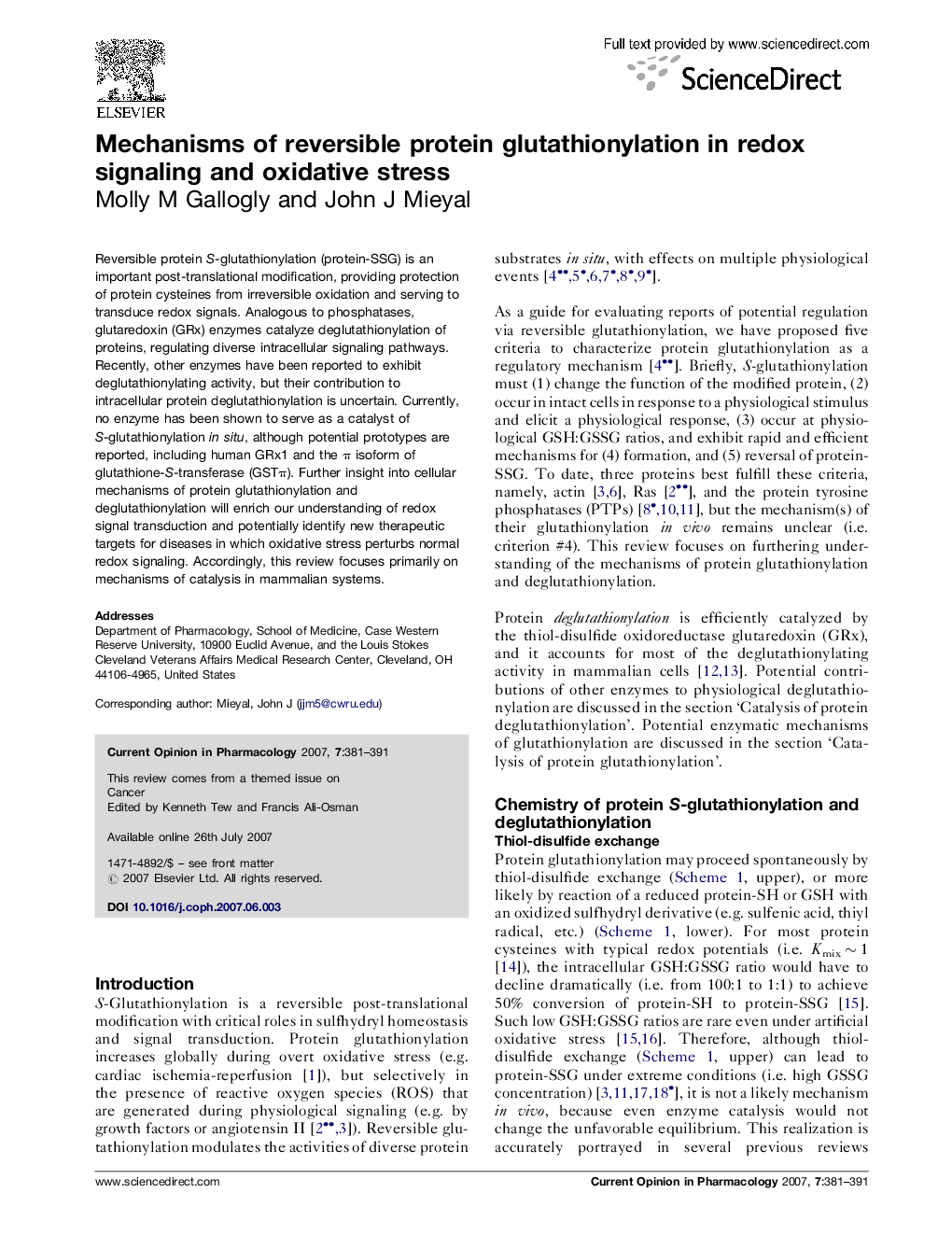| Article ID | Journal | Published Year | Pages | File Type |
|---|---|---|---|---|
| 5826598 | Current Opinion in Pharmacology | 2007 | 11 Pages |
Abstract
Reversible protein S-glutathionylation (protein-SSG) is an important post-translational modification, providing protection of protein cysteines from irreversible oxidation and serving to transduce redox signals. Analogous to phosphatases, glutaredoxin (GRx) enzymes catalyze deglutathionylation of proteins, regulating diverse intracellular signaling pathways. Recently, other enzymes have been reported to exhibit deglutathionylating activity, but their contribution to intracellular protein deglutathionylation is uncertain. Currently, no enzyme has been shown to serve as a catalyst of S-glutathionylation in situ, although potential prototypes are reported, including human GRx1 and the Ï isoform of glutathione-S-transferase (GSTÏ). Further insight into cellular mechanisms of protein glutathionylation and deglutathionylation will enrich our understanding of redox signal transduction and potentially identify new therapeutic targets for diseases in which oxidative stress perturbs normal redox signaling. Accordingly, this review focuses primarily on mechanisms of catalysis in mammalian systems.
Related Topics
Life Sciences
Neuroscience
Cellular and Molecular Neuroscience
Authors
Molly M Gallogly, John J Mieyal,
